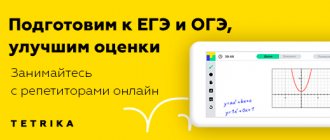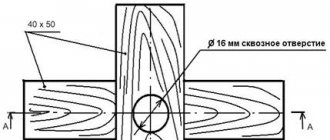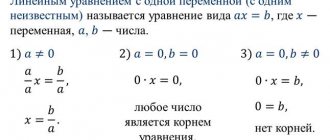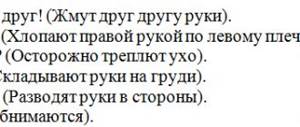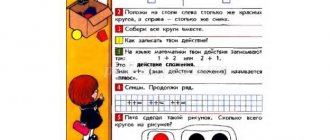Only those who show enough persistence can master the school mathematics curriculum. In 7th grade lessons, students are introduced to such sections as power with natural exponent, monomial and polynomial, linear function, systems of linear equations with two variables.
By taking part in competitions, students deepen their knowledge and improve the skills acquired in the lessons. But to achieve a high result, you need to prepare long and hard.
On our website you will find math olympiad assignments with answers and solutions. The proposed tasks will help you prepare for the Olympiad. We advise you to use them as a simulator both in class and during extracurricular self-study.
- Equations
- Tasks
- Math riddles
- Answers to equations
- Answers to problems
- Answers to riddles
Mathematics Olympiad 7th grade
Download the assignments by filling out the form!
After you provide the data, the download button will become active.
Equations
1. Both roots of the equation x2 – ax + 2 are natural numbers. What is a?
2. Solve the equation in natural numbers: zx + 1 = (z + 1)2
3. Solve the equation: 12 – (4x – 18) = (36 + 5x) + (28 – 6x)
4. Find the solution to the equation: 7x + 3 (x+0.55) = 5.65
5. Solve the equation: 10y – 13.5 = 2y – 37.5.
6. Convert to a polynomial: (4x – 5y)2
7. Imagine the expression as a square binomial: 4y2 - 12y + 9
8. Solve the equation: 8y – (3y + 19) = -3(2y – 1)
9. Solve the equation: 5x2 – 4x = 0
10. Solve the system of equations: { x+2*y = 12 { 2*x-3*y = -18
Exercise 1
(7 points) Give an example of two ordinary fractions whose difference is three times their product.
Give calculations that justify this property. Answer . For example, 1/2 and 1/5
Solution
Any fractions of the form 1/n and 1/(n+3) , there are other solutions.
Verification criteria
- Any complete correct solution is worth 7 points.
- The correct answer is given without justification - 3 points.
Tasks
Problem No. 1 Of the numbers A, B and C, one is positive, one is negative and one is equal to 0. It is known that A = B (B – C). Which number is positive, which is negative and which is equal to 0? Why?
Task No. 2 The sequence is built according to the following law. In the first place is the number 7, then behind each number is the sum of the digits of its square, increased by 1. What number is in the 2000th place?
Problem No. 3 In the 19th-20th centuries, Russia was ruled by 6 kings of the Romanov dynasty. Here are their names and patronymics in alphabetical order: Alexander Alexandrovich, Alexander Nikolaevich, Alexander Pavlovich, Nikolai Alexandrovich, Nikolai Pavlovich, Pavel Petrovich. Once the brother ruled after the brother, in all other cases the son ruled after the father. As you know, the last Russian Tsar, who died in Yekaterinburg in 1918, was named Nicholas. Find the order of reign of these kings.
Problem No. 4 How many numbers from 1 to 90 are divisible by 2, but not divisible by 4?
Problem No. 5 There are 114 kg of sugar in three bags. The first is 16 kg less than the second, and the third is 2 kg less than the second. How many kilograms of sugar are in the second bag?
Problem No. 6 How many different three-digit numbers can be made from the numbers 1, 2, 3, 4, 5, if the numbers are not repeated in the number.
Problem No. 7 Point D is the midpoint of the base AC of isosceles triangle ABC. Point E is the base of the perpendicular drawn from point D to side BC. Segments AE and BD intersect at point F. Determine which of the segments BF or BE is longer.
Problem No. 8 The floor in Baron Munchausen's living room is paved with identical square stone slabs. Baron claims that his new carpet (made from one piece of carpet) covers exactly 24 tiles, and that each vertical and horizontal row of tiles in the living room contains exactly 4 tiles covered with carpet. Is the baron deceiving?
Problem No. 9 Sasha wrote down the first million natural numbers not divisible by 4. Roma calculated the sum of 1000 consecutive numbers in Sasha’s notation. Could he have ended up with 20012002?
Problem No. 10 A car traveled from A to B at an average speed of 50 km/h, and returned back at a speed of 30 km/h. What is its average speed?
Olympiad tasks in mathematics for 7th grade Olympiad tasks in mathematics (7th grade)
School stage of the All-Russian Olympiad for schoolchildren in mathematics
2019-2020 academic year, 7th grade
TASKS (1 option)
1. How many four-digit numbers are there that are divisible by 45, and the two middle digits are 9 and 7?
2.Sea water contains 5% salt. How many kilograms of fresh water must be added to 40 kg of sea water so that the salt content in the mixture is 2%?
3. A motor ship travels between two piers along the current in 3 hours, and returns back in 4 hours. How long will it take the raft to cover this distance?
4. From a rectangle 324x141 cm, several squares with a side of 141 cm are cut until a rectangle remains with the length of one side less than 141 cm. Squares are cut from the resulting rectangle, the sides of which are equal in length to its shorter side, as long as this is possible , etc. What is the side length of the last square cut?
5. The head of the math club found a mistake in the joint work of three students: Dmitry, Ilya and Alexey. During the circle class they began to make excuses.
Ilya.1) I wasn’t the one who made the mistake. 2) Alexey made a mistake. 3) I wrote another part of the work.
Dmitriy. 1) Alyosha made a mistake. 2) I know how to fix it. 3) Great mathematicians also made mistakes.
Alexei. 1) It wasn’t me who made a mistake. 2) I have long suspected that something is wrong here. 3) Ilya actually wrote another part of the work.
The leader of the circle knew that two of the three statements of each were true, and one was false. Which student made a mistake in their work?
School stage of the All-Russian Olympiad for schoolchildren in mathematics
2019-2020 academic year, 7th grade
TASKS (2nd option)
1.Can the number 203 be represented as the sum of several natural numbers so that the product of all these numbers is also equal to 203?
2. The student was sent an assignment consisting of 20 problems. For each correctly solved problem he is given 8 points, for each incorrectly solved one - minus 5 points, for a problem that he did not undertake to solve - 0 points. The student received a total of 13 points. How many problems did he undertake to solve?
3. The fountain in the city square is connected to the clock on the tower: it works when at least one of the clock hands is between the numbers 3 and 4 or between the numbers 8 and 9. How long does this fountain work during the day?
4. Fresh cherries contained 99% water. After drying, the humidity was 98%. By how many percent should the price of dried cherries be raised in order to earn the previously planned amount?
5. 5 messages were received about the natural number X:
1) X is a two-digit number, 2) X is divisible by 5, 3) X is not more than 14, 4) X is the square of an integer, 5) X is an odd number. Four of these messages are known to be true and one is false. What is X equal to?
School stage of the All-Russian Olympiad for schoolchildren in mathematics
2019-2020 academic year, 7th grade
SOLUTIONS (1 option)
1.Answer: 2790, 2970, 6795, 6975.
A four-digit number, the middle digits of which are 9 and 7, has the form: *97* or *79*. Since the number must be divisible by 45, it must be divisible by 5 and 9 (since 45 = 5x9). This means that these four-digit numbers end in 5 or 0 (since they are divisible by 5). Those. have the form: *970, *790, *795, *975. But they are also divisible by 9, which means the sum of the digits is also divisible by 9. 9+7=16, missing 2. 7+9+5=21, missing 6. So these numbers are 2970, 2790, 6795, 6975.
2.Answer: 60 kg.
Let X kg of fresh water be added. Mixture mass (X+40) kg. Initially, there was 40 x 0.05 = 2 kg of salt in sea water. The mixture now contains (X+40)0.02 kg of salt and since its amount remains unchanged, then
(X+40)0.02=2.
0.02X=1.2
X=60.
3. Answer: 24 hours.
Let x km/h be the ship's own speed, and let y km/h be the speed of the current. In 3 hours downstream the ship will travel 3(x+y) km, and in 4 hours against the current
4(x-y) km. Since the ship travels the same distance, then
3(x+y)=4(x-y)
7y=x.
Let's find the distance between the piers 3(7у+у)=24у. Since km/hour is the speed of the current, and therefore the speed of the raft, it will take 24 hours for it to cover a distance of 24 km.
4.Answer: 3 cm.
First, cut 2 squares with a side of 141 cm, because 324=141x2+42. What remains is a rectangle with dimensions of 141 cm and 42 cm. Now we cut off squares with a side of 42 cm, we can cut 3 such squares, because 141=42x3+15. What remains is a rectangle with sides 42 cm and 15 cm. Cut off squares with sides 15 cm, cut 2 of them, because 42=15x2+12. What remains is a rectangle with sides of 15 cm and 12 cm. Next, we cut off squares with sides of 12 cm, we can cut off 1, since 15 = 12x1+3. What remains is a rectangle with sides 12cm and 3cm. It remains to cut off squares with a side of 3 cm, we can cut 4 of them, because 12=3x4.
5. Answer: Dmitry.
Let's assume that Ilya was mistaken. Then his first two statements are incorrect, and this contradicts the conditions of the problem. This means that Ilya could not make a mistake.
Let's assume that Dmitry was mistaken. Then his first statement is false, but the other two are true. Those. There are no contradictions with the condition, which means Dmitry could have made a mistake.
Let's make a table. We use the “_” sign to mark statements that are obviously incorrect, and the “+” sign to mark those that may be true.
| 1 | 2 | 3 | |
| Ilya | + | — | + |
| Dmitriy | — | + | + |
| Alexei | + | — | + |
Let's assume that Alexey was mistaken. Then Ilya’s third statement is incorrect, because His first two statements are correct, therefore Alexey's third statement is false (it is exactly the same). Then Alexey’s first statement is true (only one of his statements, the third, is incorrect), and this contradicts the assumption. Those. Alexey could not be mistaken.
This means Dmitry was mistaken.
School stage of the All-Russian Olympiad for schoolchildren in mathematics
2019-2020 academic year, 7th grade
SOLUTIONS (2nd option)
- Answer: you can.
The number 203 can be decomposed into two prime factors 7 and 29. Then we present it as the sum of these terms and add 167 terms equal to 1, i.e. 203=7+29+1+1+1+…+1. Then
203 = 7x29x1x1x1x1x....x1, where there are also 167 factors equal to 1.
- Answer: The student took on 13 problems.
Let x be the number of correctly solved problems, and let y be the number of incorrectly solved problems. The points scored by the student are 8x-5y=13. Let's transform the equation so as to highlight the sum x + y (the number of tasks that the student started). 8(x+y)=13(1+y). Because 8 is not divisible by 13, then the sum (x+y) is divisible by 13 and by condition x+y is not more than 20. Therefore x+y=13. Then x=6, and y=7, because 1+y =8.
- Answer: 7 hours 20 minutes
Let's look at the hour hand. During the day, the hour hand falls between the numbers 3 and 4, 8 and 9 four times for 1 hour. This means that the fountain will work for 4 hours.
Consider the minute hand. Over the course of 1 hour, the minute hand falls between the numbers 3 and 4, 8 and 9 twice for 5 minutes. Because There are 24 hours in a day, excluding 4 hours, because... the fountain is already working (there will already be an hour hand and the fountain will work), then 20 x 10 minutes = 200 minutes = 3 hours 20 minutes.
This means that the fountain will work for 4 hours + 3 hours 20 minutes = 7 hours 20 minutes.
- Answer: 100%
Let there be x kg of cherries. The solid mass of cherries (without water) is 0.01x kg. This amount after drying is 2% of the mass of the cherry. This means that the whole cherry after drying weighs 0.01x:0.02=0.5x kg. Those. The cherry lost half of its mass after drying. To get the target amount, you need to double the price, i.e. will increase by 100%.
- Answer: 25
Let's say that the first statement is false, then the remaining four are true. But we get a contradiction, because a number not greater than 14 cannot be an exact square and cannot be divisible by 5. This means that the first statement is true.
Let's assume that the second statement is false. Again we get a contradiction, because a two-digit number, no more than 14, cannot be an exact square. This means that the second statement is also true.
Let's assume that the third statement is false. Then a two-digit number that is divisible by 5 and is the square of an integer is 25 and is odd. This is the only two-digit number. This means that the third statement may be false.
Let's assume that the fourth statement is false. Then A is a two-digit number, not greater than 14, which is divisible by 5. This is the number 10. This contradicts the fifth statement. This means that the fourth statement is also true.
Let's assume that the fifth statement is false and all the others are true. We get a contradiction, because a two-digit number not greater than 14 cannot be the square of an integer. This means that the fifth statement cannot be false.
The only solution left is: the third statement is false, the rest are true. This number is 25.
Criteria for evaluating olympiad assignments
Mathematical Olympiad tasks are creative and allow for several different solutions.
In accordance with the regulations for holding mathematical Olympiads, each problem is scored out of 7 points.
The correspondence between the correctness of the solution and the points awarded is shown in the table.
| Points | Correctness (incorrectness) of the decision |
| 7 | Completely correct decision. |
| 6 | The right decision. There are minor shortcomings that generally do not affect the decision. |
| 5 | The decision is generally correct. However, it contains a number of errors, or does not consider individual cases, but may become correct after minor corrections or additions. |
| 4 | One of the two (more complex) significant cases has been correctly considered, or in a problem of the “estimate + example” type, the estimate has been correctly obtained. |
| 3 | Auxiliary statements are proven that help in solving the problem. |
| 2 | Some important cases in the absence of a solution (or in the event of an erroneous decision) are considered. |
| 1 | The solution has begun, but little progress has been made. |
| 0 | The decision is incorrect, there is no progress. |
| 0 | There is no solution. |
Besides:
a) any correct solution is scored 7 points. It is unacceptable to deduct points because the solution is too long, or because the student’s solution differs from that given in the methodological developments or from other solutions known to the jury; when checking the work, it is important to understand the logic of the participant’s reasoning, the degree of its correctness and completeness is assessed;
b) the Olympiad work is not a test work of the participant, therefore any corrections in the work, including crossing out previously written text, are not grounds for deducting points; It is unacceptable to deduct points from work for inaccurate recording of decisions during its implementation;
c) points are not awarded “for the efforts of the Participant,” including for writing a large text in the work, but not containing progress in solving the problem;
d) the winners of the Olympiad in one parallel can be several participants who have scored the most points, therefore it is not necessary to “separate” the best participants of the Olympiad.
Task 4
(7 points) One of three friends: Andrei, Boris or Vladimir is the strongest, the other is the smartest, the third is the kindest. One day they said the following:
Andrey : Vladimir is stronger than me.
Boris : I'm smarter than Vladimir.
Vladimir : Boris is smarter than me.
It is known that the strongest and the kindest told the truth, the smartest lied, and among them there are no two people equal in strength.
Is it true that among three friends, the one who is the kindest is also the weakest?
Justify your answer.
Answer . Yes.
Solution
Let's denote: A - Andrey, B - Boris, C - Vladimir. Statements B and C repeat each other, and since there is only one incorrect statement among the three, B and C told the truth, A said a lie. Consequently, A is the smartest (by condition), A is stronger than B (since A lied) and B is smarter than C (since B and C told the truth). Since A is stronger than B, then B is not the strongest. It turns out that B is the strongest, A is average in strength, and B is the weakest. At the same time, B is not the smartest and not the strongest, which means he is the kindest.
For clarity, you can enter the available information in a table. We will designate the “places” of each quality: 1 - first place (smartest / strongest / kindest), 2 - average, 3 - last place.
| smart | strong | Kind |
| A | 1 | 2 |
| B | 1 | |
| IN | 3 | 1 |
The table shows that B is the kindest and the weakest.
Verification criteria
- Any complete correct solution is worth 7 points.
- It was correctly and reasonably found who is the strongest, who is the smartest and who is the kindest, but there is no further advancement - 5 points.
- Reasonably received, Andrey is the smartest, friends are correctly distributed according to strength (all 3 places), but not received or not correlated with the fact that Vladimir is the kindest - 5 points.
- Reasoning is given only for a particular case (for example, only the case that Andrei told a lie is considered) without considering other special cases and without indicating their impossibility - 2 points.
- The correct answer indicating who is the smartest, who is the strongest and who is the kindest, with verification that with this arrangement all the conditions of the task are met, but without justification - 2 points.
- An error was made at the very beginning of the reasoning - 0 points.
- The only answer given is 0 points.
Options for Mathematical Olympiads
It contains options for mathematics olympiads used in everyday work. After all, the best way to prepare for the Olympics is to constantly solve the options of recent years.
The two-digit number in each link indicates the year the Olympiad finals were held.
All-Russian Olympiad for Schoolchildren in Mathematics
| SE | ME | RE | ZE | |
| 5th grade | , , , , , | , | — | — |
| 6th grade | , , , , , | , | — | — |
| 7th grade | , , , , , | , , , , | — | — |
| 8th grade | , , , , , | , , , , | — | — |
| 9th grade | , , , , , | , , , , | , , , , | , , , , |
| Grade 10 | , , , , , | , , , , | , , , , | , , , , , |
| Grade 11 | , , , , , | , , , , | , , , , | , , , , |
Notes.
- The municipal stage for grades 5 and 6 has not been held since 2015/16.
- Regional and final stages are not provided for grades 5–8. Instead, the Olympiad is held. Leonhard Euler (for eighth graders).
Olympics named after Leonhard Euler
Olympics named after Leonard Euler (All-Russian Junior League) has been held since 2008/09.
| Region | , , , , , , , , , |
| The final | , , , , , , , , , |
Moscow Mathematical Olympiad
| 8th grade | , , , , , , , , , , |
| 9th grade | , , , , , , , , , , |
| Grade 10 | , , , , , , , , , , |
| Grade 11 | , , , , , , , , , , |
Tournament of Cities
| ABOUT | OS | WB | Sun | |
| 8–9 grades | , , | , , | , , | , , |
| 10–11 grades | , , | , , | , , | , , |
Olympics “Conquer the Sparrow Hills!”
| 5–6 grades | 18.1a, 18.1b, 18.2a, 18.2b, 18.3a, 18.3b 17.1a, 17.1b, 17.2a, 17.2b, 17.3a, 17.3b 16.1a, 16.1b, 16.2a, 16.2b, 16.3a, 16.3 b |
| 7th grade | 18.1a, 18.1b, 18.2a, 18.2b, 18.3a, 18.3b 17.1a, 17.1b, 17.2a, 17.2b, 17.3a 16.1a, 16.1b, 16.2a, 16.2b, 16.3a, 16.3b , , , |
| 8th grade | 18.1a, 18.1b, 18.2a, 18.2b, 18.3a, 18.3b 17.1a, 17.1b, 17.2a, 17.2b, 17.3a 16.1a, 16.1b, 16.2a, 16.2b, 16.3a, 16.3b , , , |
| 9th grade | 18.1a, 18.1b, 18.2a, 18.2b, 18.3a, 18.3b 17.1a, 17.1b, 17.2a, 17.2b, 17.3a 16.1a, 16.1b, 16.2a, 16.2b, 16.3a, 16.3b , , , |
| 10–11 grades | 19.1, 19.2, 19.3, 19.4, 19.5, 19.6 18.1, 18.2, 18.3, 18.4, 18.5, 18.6 17.1, 17.2, 17.3, 17.4, 17.5 16.1, 16.2, 16.3, 16.4, 16.5, 16.6 15.1, 15.2, 15.3, 15.4, 15.5, 15.6 14.1, 14.2, 14.3, 14.4, 14.5, 14.6, 14.7 13.1, 13.2, 13.3, 13.4, 13.5, 13.7 12.1, 12.2, 12.3, 12.4, 12.5, 12.6, 12.7 11.1, 11.2, 11.3, 11.4 10.1, 10.2, 10.3, 10.4, 10.5 |
Olympics "Lomonosov"
| 5–6 grades | , , , |
| 7th grade | , , , , , , , |
| 8th grade | , , , , , , , |
| 9th grade | , , , , , , , |
| 10–11 grades | , , , , , , , , , , , , |
Olympiad "Phystech"
| Online | The final | |
| 5th grade | , , | — |
| 6th grade | , , | — |
| 7th grade | , , , | — |
| 8th grade | , , , , | — |
| 9th grade | , , , , , , | 20.1, 20.2 19.1, 19.2 18.1, 18.2; 17.1, 17.2 16.1, 16.2, 16.3 |
| Grade 10 | , , , , , , | 20.1, 20.2 19.1, 19.2 18.1, 18.2; 17.1, 17.2 16.1, 16.2, 16.3 15.1, 15.2, 15.3 |
| Grade 11 | , , , , , , | 20.1, 20.2 19.1, 19.2 18.1, 18.2; 17.1, 17.2 16.1, 16.2, 16.3 15.1, 15.2, 15.3 14.1, 14.2; 13.1, 13.2 12.1, 12.2; 11.1, 11.2 10.1, 10.2; 09.1, 09.2; , |
| Exam 1994 - 2008 | 08.1, 08.2, 08.3, 08.4 07.1, 07.2, 07.3, 07.4 06.1, 06.2, 06.3, 06.4 05.1, 05.2, 05.3 04.1, 04.2, 04.3 03.1, 03.2, 03.3 02.1, 02.2, 02.3 01.1, 01.2, 01.3 | 00.1, 00.2 99.1, 99.2 98.1, 98.2 97.1, 97.2, 97.3 96.1, 96.2, 96.3 95.1, 95.2, 95.3 94.1, 94.2, 94.3 |
Notes.
- There are no in-person finals for grades 5–8 at this time.
- In 2016/17 and 2017/18, the Year 7 assignment was given in the online phase for Years 5 and 6.
- The in-person final for grade 10 was held for the first time in 2020, and for grade 9 in 2020.
Olympiad "Highest Standard"
| 7th grade | , , , , , |
| 8th grade | , , , , , , |
| 9th grade | , , , , , , , , |
| Grade 10 | , , , , , , , , |
| Grade 11 | , , , , , , , , |
Olympics "Kurchatov"
| 6th grade | , , , , |
| 7th grade | , , , , , |
| 8th grade | , , , , , |
| 9th grade | , , , , , |
| Grade 10 | , , , , , |
| Grade 11 | , , , , , |
OMMO - United Interuniversity Mathematical Olympiad
| 9–10 grades | , |
| Grade 11 | , , , , , , , , , , |
Written exam of the Faculty of Mechanics and Mathematics of MSU and DVI MSU
| Mekhmat | , , , , , 04-03, 04-07; 03-03, 03-05, 03-07 02-03, 02-05, 02-07; 01-03, 01-05, 01-07 00-03, 00-05, 00-07; 99-03, 99-05, 99-07 98-03, 98-05, 98-07; 97-03, 97-05, 97-07 96-03, 96-05, 96-07; 95-03, 95-05, 95-07 94-05, 94-07, 93-05, 93-07 |
| DVI | , , , , , , , |
Mathematical holiday
| 6th grade | , , , , , , , , , , , , , , , , , , , , , , , , , , , , |
| 7th grade | , , , , , , , , , , , , , , , , , , , , , , , , , , , , |
Archimedes Tournament
| Winter tour | , , , , , , , , |
Moscow City Oral Mathematical Olympiad for grades 6–7
| 6th grade | , , , , , , , , , , , , , , , |
| 7th grade | , , , , , , , , , , , , , , , |
All-Union Olympiad for Schoolchildren in Mathematics
| Grade 11 | , , , , , , , |
International Olympiad "Tuymaada" in mathematics
| Senior League | , , , |
